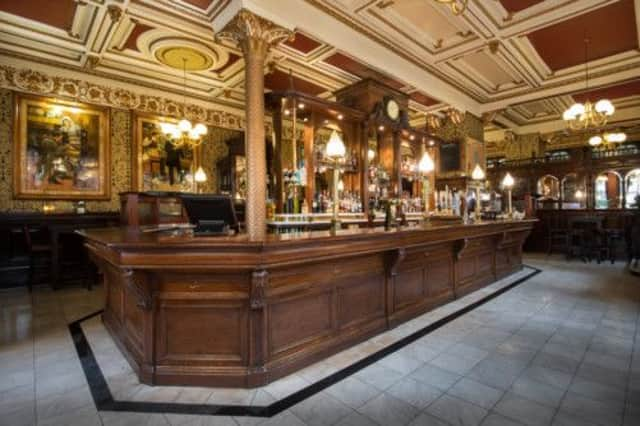Closing time for Scotland’s historic pubs


Out of Scotland’s then pub stock of more than 4,000, we considered 115 to be of such importance that they should be recognised as such and the owners and local authorities encouraged to ensure that these gems of pub architecture remained genuine historic pubs for years to come.
They ranged from the late Victorian splendour of Edinburgh’s Café Royal, Kenilworth and Bennets at Tollcross, and the Horseshoe Bar in Glasgow, to the art deco Steps Bar and Portland Arms in Glasgow and single-room tenement pubs such as The Clep in Dundee.
Advertisement
Hide AdAdvertisement
Hide AdWhat they all had in common was that they, by and large, had remained untouched by the architectural vandalism passing for progress that was rife in urban Scotland in the 1960s. Since then, we have come to recognise the sorts of buildings and structures that should be preserved for future generations to enjoy.
Historic Scotland
Although Historic Scotland was not involved in the compilation of the guide, it was quickly on board and played a major part in ensuring the maximum publicity.
Historic Scotland agreed to carry out a thematic review of all the pubs on the list, with a view to potentially listing those pubs that were not listed and upgrading those that were already listed. As a result of this review, of the 55 pubs that were not listed, ten of them were given statutory listing, and four – the Kenilworth and Central Bar in Edinburgh, the Horseshoe in Glasgow and the Feuars Arms in Kirkcaldy – were upgraded from Category B to Category A.
Category A listing is for buildings of a national or international importance, either historical or architectural, or fine little-altered examples of a particular period, style or building type. As only 8 per cent of listed buildings are Category A, it shows you how significant these pubs are architecturally – and they must be some of the few in this category that are still used for the purpose for which they were originally built.
Sadly, of the 45 pubs that Camra considers to be true heritage pubs of Scotland that are not listed, we have lost six of them in Edinburgh alone as the owners have redeveloped them to look like many other bland identikit pubs rather than making the most of what they are and marketing them as historic pubs – surely the ultimate theme.
As Historic Scotland quite rightly attaches stringent conditions regarding listing, many tenement pubs, the dominant style in urban Scotland, will not be listed as the whole building is covered by a listing and many tenements with wonderful pubs on the ground floor are not worthy of listing, meaning the pub isn’t either. The onus for protecting pubs thus falls on councils as the local planning authority, and it is a task they seem incapable of carrying out.
This is because they will only consider material objections to planning applications and so give no recognition to the fact that a pub has been virtually unchanged in many decades.
The standard reaction is that it is “only” one pub, but this salami slicing means that, in Edinburgh, Bennets in Morningside, Rutherford’s, the Stag’s Head and, most recently, the Station Bar at Abbeyhill have all been “upgraded” and any historical significance lost forever. The city council seems not to care; they are only pubs, after all.
Advertisement
Hide AdAdvertisement
Hide AdClark’s Bar in Edinburgh’s New Town is also on the danger list, as there is a planning application pending for it. I suspect that what it will take is for Camra to act as the catalyst and invite other bodies concerned with preserving the built environment throughout the country to get together.
These bodies can then work with council planning departments to ensure that we preserve the best in pub architecture for future generations to enjoy – just like previous generations did.
• Colin Valentine is chairman of Camra, the Campaign for Real Ale www.camra.org.uk